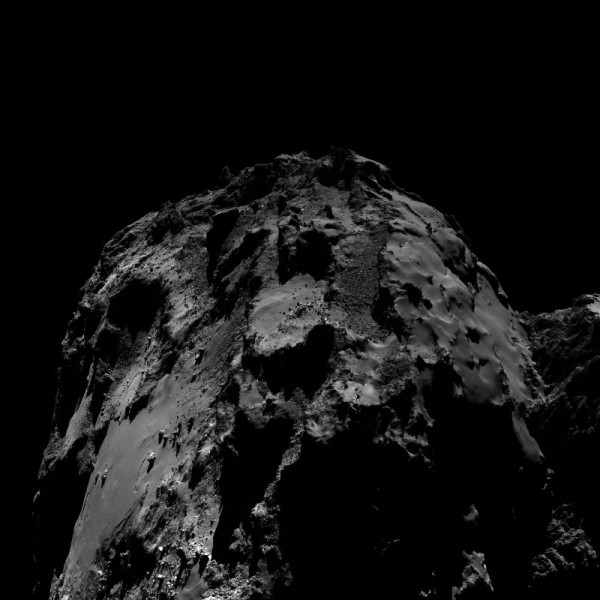By Ana Verayo, | September 10, 2016

OSIRIS wide-angle camera image taken on 10 August 2016, when Rosetta was 12.8 km from the centre of Comet 67P/Churyumov–Gerasimenko.
After finding the long lost lander lodged between jagged rocks, comet chaser Rosetta probe has now detected new data revealing complex organic molecules on the surface of comet 67P.
European Space Agency's Rosetta mission is now coming to an end this month, as the Rosetta spacecraft is running out of fuel where mission scientists will execute a final maneuver and engine burn that will crash itself on the surface of the comet 67P Churyumov-Gerasimenko.
Like Us on Facebook
These newest observations revealed complex organic molecules detected in dust grains that are covering the comet. This discovery can also be considered as strong evidence about how life began in our solar system, as comets or asteroids are believed to trigger biochemical processes when it crashed on our planet billions of years ago.
Not only that, but this is also the first comet mission to provide solid evidence that organic matter exists on comets.
Using Rosetta's onboard scientific instruments, the probe utilized the COSIMA instrument (Cometary Secondary Ion Mass Analyser) to analyze these grains.
According to co-author of the study, Hervé Cottin, their new analysis reveals carbon in the most complex form they have ever imagined to be. This carbon is so complex that the team cannot provide a proper formula for or even a name yet.
Mission scientists analyzed about 200 grains of dust where they detected complex molecules of aluminum, calcium, iron, magnesium, silicon and sodium that are mixed with carbon and a very high content of hydrogen, as opposed to meteorites.
They also add that this comet organic matter is insoluble that is bound to very large macromolecular compounds, similar to organic matter found in carbonaceous chondrite meteorites.
This new study is published in the journal Nature.
-
Use of Coronavirus Pandemic Drones Raises Privacy Concerns: Drones Spread Fear, Local Officials Say

-
Coronavirus Hampers The Delivery Of Lockheed Martin F-35 Stealth Fighters For 2020

-
Instagram Speeds Up Plans to Add Account Memorialization Feature Due to COVID-19 Deaths

-
NASA: Perseverance Plans to Bring 'Mars Rock' to Earth in 2031

-
600 Dead And 3,000 In The Hospital as Iranians Believed Drinking High-Concentrations of Alcohol Can Cure The Coronavirus

-
600 Dead And 3,000 In The Hospital as Iranians Believed Drinking High-Concentrations of Alcohol Can Cure The Coronavirus

-
COVID-19: Doctors, Nurses Use Virtual Reality to Learn New Skills in Treating Coronavirus Patients







